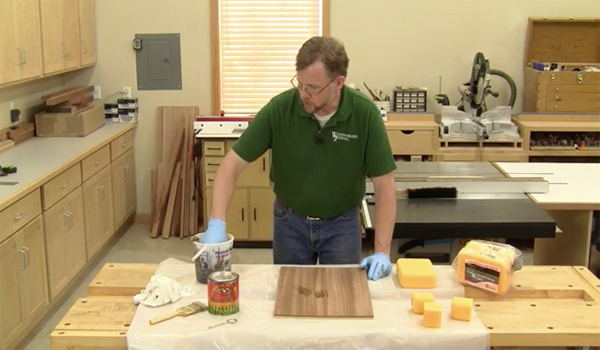
I just finished staining my first project. I sanded the wood heavily with a random orbital sander, first 80 grit, and then 120 grit. I stained with one-step Olympic light pecan stain. After the stain dried grayish, vertical stripes appeared. Did I do something wrong? How do I avoid this? Can this be fixed, short of completely sanding down past the stain penetration?
Michael Dresdner: Here’s a piece of advice I’ve been giving out on an average of once a day for the past 20 years or so: finish firewood. That means test all finishing materials and sequences on similar scrap wood, prepared the same way, BEFORE you apply it to your project.
One possibility, if the gray stripes correspond with the grain, is that the graying has to do with the way the stain dries and absorbs differently into early wood, versus late wood, especially on species like pine. Usually, that graying will go away after you apply the next clear topcoat. Another possibility is that you did not apply the stain uniformly. The best way to apply stain is always to flood it on and wipe it all off while it is still wet. That is the one method that takes no special skill and results in the best odds of getting a uniform coloration. Staining uniformly becomes even more difficult with so-called “one step” or combination stains, that contain finish as well as stain. It is far more difficult t o apply these stains evenly, and I do not recommend them to beginners.
By the way, your sanding and preparation sequence was also inadequate for that type of stain on that type of wood, but that’s fodder for yet another question.
Rob Johnstone: Applying stain to raw pine is rarely successful. I do think you will need to sand past the stain penetration to solve the problem. My recommendation is this. Sand to 180 grit and apply a very thin coat of shellac. Then if you wish to stain, apply it after the shellac. Apply more shellac (a full strength version, Zinser’s Seal Coat would be good), then lightly sand and finish as desired.





